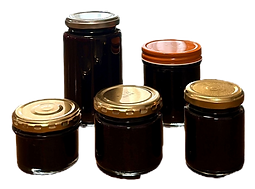
Characteristics of Aronia
One grain of Aronia contains a wealth of polyphenols, especially anthocyanins, as well as beta-cryptoxanthin, beta-carotene, dietary fiber, minerals such as iron, potassium and calcium, and vitamins.
This is something that is unparalleled when compared to other fruits and even other foods, making it truly the king of fruits.
In Europe, aronia is described as a "medical fruit" because of its rich nutritional content, but its use goes beyond that and is expanding into the possibility of promoting health and longevity for each and every individual.
So, let's take a closer look at what kind of fruit aronia is, its appeal, and its nutrients!
We will introduce you to the blessings of nature that are beneficial for your health and beauty.
Polyphenols have...
Anthocyanin
Carotenoids have...
・β-cryptoxanthin
・β-carotene
And more!!

What nutrients does it contain?




Aronia is noted for its richness in polyphenols and carotenoids compared to other fruits. For example, its content of anthocyanin , a type of polyphenol , is far greater than that of other fruits and vegetables such as blueberries and cranberries, and its richness is also evident from its rich color. Aronia also contains a lot of carotenoids (β-cryptoxanthin and β-carotene) , dietary fiber, iron, potassium, calcium, and other nutrients . The balanced content of these components makes aronia stand out from other fruits, and its value is widely recognized.

What kind of plant is aronia?

Aronia is a deciduous shrub in the Rosaceae family and is a type of berry, similar to blueberries and raspberries .
It is also known as "chokeberry" overseas.
Aronia produces small white flowers in early summer around early June.
After that, the fruit begins to grow from summer to autumn, and around September the ripe black fruits about 1cm in size are ready to be harvested.
In addition, in late autumn the leaves turn red, allowing you to enjoy beautiful autumn colors.
The leaves then fall off, signaling the arrival of winter.





Aronia white flower

What does it taste like?


Aronia fruit has a distinctive sour and bitter taste when raw.
(When you measure the sugar content, it is about the same as apples or peaches, but it has a pronounced bitterness that makes it difficult to eat as is.)
However, once frozen, the astringency is significantly reduced, making it delicious to eat as jam, juice, syrup, or fruit liqueur.
Recently, more and more people are incorporating the nutrients contained in aronia into smoothies and other ways!!


Jam

Juice


That's true!!
Even if measured with a sugar content meter
16.7 degrees
It says this!


Where is it cultivated?
Aronia is a fruit native to North America and is believed to have been introduced to Russia via Europe in the early 19th century.
Aronia is cold tolerant, with some varieties able to withstand temperatures as low as -35°C!
In Japan, cultivation began in 1976 when seeds were imported from Russia to Hokkaido.
The first place to cultivate it as an agricultural crop was Otaki Village (now Date City) in the southwest of Hokkaido!
(Shizento products only use aronia grown in Date City!)
Currently, it is grown in Chitose, Ebetsu, Kitami and other cities in Hokkaido, and in Honshu, it is only grown in some areas of Iwate and Nagano prefectures.



From New Chitose Airport
About 1.5 hours by car
Lake Toya is nearby
Yes there is!
